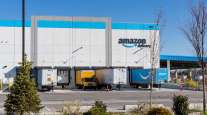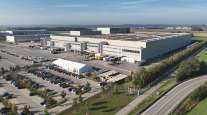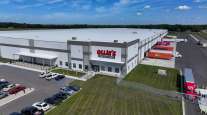Urban Delivery Hubs Present Solutions to Final-Mile Shipping
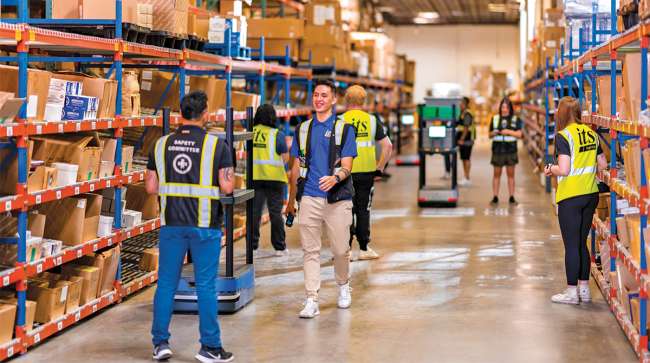
[Stay on top of transportation news: Get TTNews in your inbox.]
It has long been a fact of life for shippers: The most expensive leg of any shipment — whether freight or parcel — is the final-mile leg. The longer the item spends with the last-mile delivery driver, the more it’s going to cost the shipper.
Added in the maze of urban settings, the infrastructure becomes a not-so-friendly environment to semi-tractors hauling 53-foot trailers. Plus, longhaul drivers’ pay structure is not set up to reward them, with all the stops and delays that happen in these cities.
An evolving — and still developing — concept to address the issue is the urban delivery hub (UDH). Described by some as the “Amazonization of last-mile delivery,” the concept has actually been in practice for nearly two decades.
The basic idea: A hub is established near the outskirts of a specific urban area, and longhaul drivers with goods destined for that area bring them all the way to that hub — bypassing regional distribution centers and cross-dock facilities along the way — then leave their haul, even if it’s the entire trailer, for the local delivery partner to take over for final-mile.
The UDH is designed to save shippers money because final-mile delivery only gets involved in the metro area of the final destination, whereas it might cross three or four states coming from a regional distribution center. It’s also designed to make better use of a longhaul driver’s time and miles — getting him or her much closer to the final destination but still not requiring significant travel in the urban center.
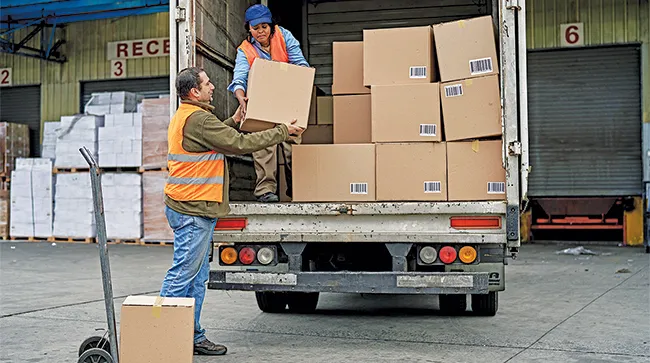
The goal of the urban delivery hub is to increase final- mile delivery efficiency. However, there are still challenges in its development. (xavierarnau/Getty Images)
But in order for the UDH to work, it requires something most shippers don’t have — volume, and lots of it.
“You see it already with major retailers,” said Jameson Goforth, vice president of final-mile for Reno-based ITS Logistics. “You saw Home Depot do it 15 years ago with their regional DCs. They were putting them in strategic markets where you could get everything next-day.”
He added that the key is, if shipping 40 shipments a day, having, for example, 10 facilities across the nation would not be sustainable. “It’s going to have to be a large retailer, large manufacturers or people with enough density to be in urban areas,” Goforth noted.
He also presented the example of a shipper that sends a significant percentage of its freight via an LTL carrier from McHenry, Ill., to Dallas.

Goforth
“If I have two pallets going from McHenry to Dallas, that’s an inefficient route,” Goforth said. “I’m going to use cross-dock several times if I’m shipping LTL. But if I have enough density, I can put a fulfillment center in Dallas, because my shipments end up in Dallas 60% of the time.”
Amazon already runs such centers because it turns enormous volume. Goforth said the best non-Amazon example he has seen is Target, which has used its back storage room to move its highest volume orders.
A UDH would serve only a specific metro area or locality and could be managed in various ways.
“What I’ve seen is some shippers who own the facility and then contract the operation of the facility to a delivery department in some cases,” said Pratik Jagad, chief operating officer for nuVizz, an Atlanta-based developer of software for final-mile delivery applications. “I’ve seen shippers who need to own the facility but they outsource the entire operation of the facility to a third-party logistics company. The longhauls drop it off and then the rest are handled by the 3PLs.”
While few individual companies have enough volume to establish and operate UDHs throughout the country, Goforth said 3PLs or associations could bring different players to find the volume and make a UDH work.
“Getting close to the consumer also allows for innovation on that last leg of delivery,” Goforth said. “Domino’s is autonomously delivering pizzas in Houston. There is no reason we could not be delivering packages in that way in the next five years. That exists all day long in Europe. You need dense urban areas for it to make sense. We don’t really do that today.”
ITS Logistics ranks No. 49 on the Transport Topics Top 100 list of the largest logistics companies in North America.
Theory Versus Practice
Jagad said the cost advantages over a regional distribution center are clear, given the volume, but it’s not guaranteed to operate as well in practice as it does in theory.
“If you have a regional DC somewhere, and there are small packages, you would be shipping them using parcel carriers like UPS, FedEx or Amazon delivery agents,” he said. “Because of distance, what’s happening is you’re going to charge them more. If they see there’s a lot of activity happening in a dense area, from a cost perspective it makes sense to forward that inventory so you can deliver it quickly.”
Jagad concluded that the only challenge is how well fleets can forecast.
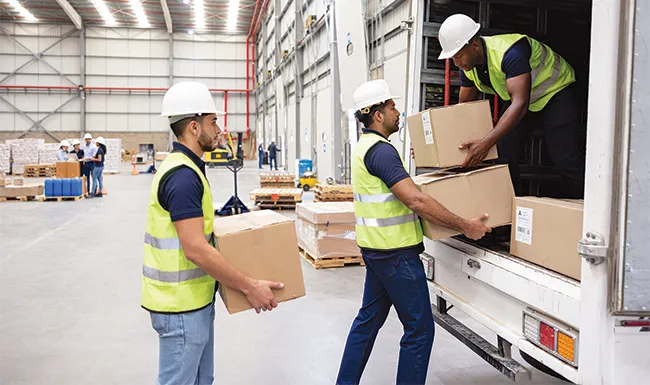
Industry experts say the urban delivery system could greatly benefit last-mile delivery but the lack of high volume keep shippers skeptical. (Hispanolistic — Getty Images)
“You may have a forward-placed hub, but you may still not have the item that got ordered, and you’d have to ship it from the regional DC anyway,” Jagad noted.
As far back as 2011, a professor at the University of Pennsylvania looked at the same idea, but from a sociological perspective. In his studies of inequalities in society for the university’s Kleinman Center for Energy Policy, Steve Viscelli focuses much of his research on freight transportation — and authored a book titled “The Big Rig: Trucking and the Decline of the American Dream.”
Viscelli envisions an adaptation of the UDH idea that virtually eliminates all longhaul trucking in urban environments. Longhaul drivers would leave their trailer at a hub established on the outskirts of the city. The trailer is then taken up by an EV truck, which will take it to its final-mile destination.

Viscelli
Meanwhile, local shippers with freight to haul have sent trailers full of their freight to the hub, and the longhaul drivers can select a trailer they would like to deliver to the hub in the city where that trailer needs to go.
And the whole process repeats itself in the next city.
Viscelli said the idea germinated from work he did in 2011 with the North American Council for Freight Efficiency, which tests the return on investment for different technologies and concepts in trucking.
“I started to really think about the duty cycles, and all the problems drivers had with this rural/urban divide,” he said. “In the urban area — for longhaul drivers anyway — they’re not paid. They’re sitting at docks. Their time is not efficiently used. They basically don’t want to be there because everything in the system is working against them.”
Meanwhile, electric trucks struggle to gain a foothold in the carrier industry because their range limits prevent them from going far outside their local areas. Viscelli sees a fortuitous confluence of factors. The electric trucks can handle the hub-to-final-mile part of the journey, seriously reducing urban emissions and keeping the EVs well within their charging range. And the longhaul trucks can get back on the road faster.
Viscelli said five or six truck ports in Chicago would have eliminated the need to add an additional lane on the Dan Ryan Expressway.
“Essentially these truck ports would give you the same benefit as an added lane in those situations, assuming thousands of trailers could be dropped,” he said. “We have this bimodal peak of morning and afternoon where the roadway is used at 120% capacity.”
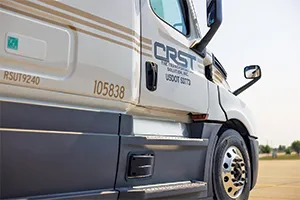
CRST’s Bill Clement warns "a one-size-fits-all" urban hub system may not appeal to larger retailers.
(CRST)
A system based on urban delivery hubs would surely reduce urban traffic and the wear-and-tear on the road, as well as emissions in the urban environment. However, Bill Clement, president of CRST Specialized Solutions, is skeptical about the willingness of shippers — especially major retailers — to embrace such a system.
“We believe that we need to deliver solutions for individual retailers and/or shippers, and that they have their insights into their individual customers, and that could be different depending on the big-box retailer,” he said. “We work in a kind of a consultative fashion to talk through some of the things that we see in the marketplace and how we can deliver a final-mile solution for their customers. But they really are largely the designers of the infrastructure and how they would like it to work.”
According to Clement, retailers might ask CRST to come up with a distribution center-based solution in which CRST as the carrier would run goods out of one of its own facilities. The retailer would ask CRST to follow very specific protocols in how it deals with each of their customers. CRST ranks No. 25 on the TT Top 100 list of the largest for-hire carriers in North America.
Large retailers can make such demands because they have the market power. Falling in with a one-size-fits-all hub system, Clement suggested, might not appeal to companies that are now in a position to customize their systems.
Jeff Loftus of FMCSA joins TT’s Seth Clevenger to discuss the current outlook on ADAS technology and how it will affect the industry at large. Tune in above or by going to RoadSigns.ttnews.com.
“I imagine what would happen in the strategy room of a giant retailer that thinks, you know, they have a competitive advantage here through their scale, so why would they move to a more neutral platform in terms of the home delivery?” he said. “I think that would be a big ask for retailers who are all out there trying to, you know, win over customers in different ways, including their final-mile delivery.”
Ben Wiesen, president of Carrier Logistics Inc., said shippers would have to embrace the concept like they do the U.S. Postal Service.
“When you use a post office, you don’t think at all about what’s going to happen after you drop it off,” Wiesen said, adding that most will trust their package is going to make it way to the desired destination. “This concept sounds like separating the vendor selection and simplifying — a place where you make a reservation for your linehaul driver to show up and drop off your load, and they take it from there.”
Much of the interest in the UDH concept stems from the growing consumer demand for up-to-the-second information — an efficiency the industry was not expected to achieve until recent years.
Wiesen said this demand has driven much of Carrier Logistics’ work in recent years.
“What used to be an art of routing delivery trucks required highly skilled people who knew a city like the back of their hand, who understood the unique particulars of each customer location,” he said. “They were encyclopedias of knowledge who could do these complex operations. The computers have caught up and surpassed the ability of those old-school route planners to deliver optimal truck routes.”
Want more news? Listen to today's daily briefing below or go here for more info:



